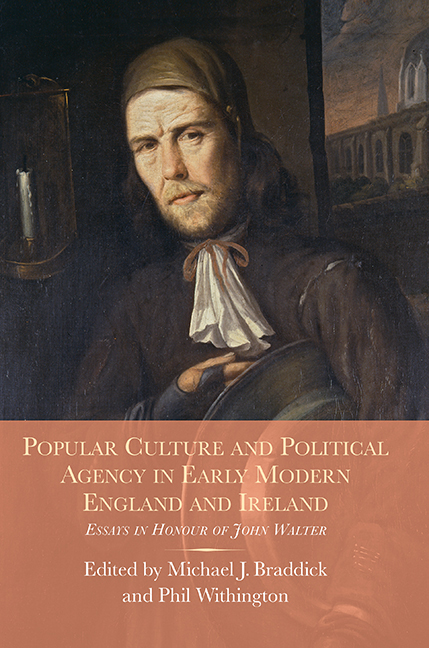 Popular Culture and Political Agency in Early Modern England and Ireland
Popular Culture and Political Agency in Early Modern England and Ireland Published online by Cambridge University Press: 09 May 2017
The incidence of harvest failure in the seven centuries from the Norman Conquest to the Restoration was particularly heightened in the periods from c.1280 to c.1322 and c.1580 to c.1640. Both were phases when English population levels peaked close to, or were in excess of 5 million. However, a significant contrast can be detected between the two eras when the intensity of crises emanating from harvest failure is measured. Although historians of early modern England have undoubtedly devoted more energy to their analysis of the admittedly more copious evidence relating in particular to crises de subsistence in the Tudor and early Stuart period, indubitably inspired by the examples set by students of the Annales school, research on the late thirteenth and early fourteenth centuries seems clearly to show that this earlier period was the more famine prone of the two. While climatic conditions giving rise to cool wet summers may have been more adverse in their impact in the early fourteenth than the late sixteenth century, it is hard to attribute the differing mortality levels in populations of similar size solely to contrasting degrees of weather extreme: in 1315–17 close to 400,000–500,000 died and 1595–7 when 40,000 died in populations of similar size. Furthermore, in the earlier period there was more likely a lower proportion of landless which a priori would mean that fewer persons were dependent on the market. We might assume that significantly more people were exposed to the vagaries of dietary deficiency in late Tudor and Stuart England since dependence of wage-paid workers on the purchase of grain or bread in the market was more widespread.
The greater vulnerability of society to dearth-driven mortality surges in the period c.1280–c.1325 had been noted previously with a stress on the greater intensity of the crises and their broader geographical extent.3 Recent work on the environmental conditions, especially those which gave rise to what has come to be known as the Great European Famine of 1315–22, has resulted in the assembly of data from cores in the Greenland ice sheet correlated with temperature conditions in the North Atlantic and linked especially to dendrochronological evidence of retarded growth of Old and New World trees.
To save this book to your Kindle, first ensure [email protected] is added to your Approved Personal Document E-mail List under your Personal Document Settings on the Manage Your Content and Devices page of your Amazon account. Then enter the ‘name’ part of your Kindle email address below. Find out more about saving to your Kindle.
Note you can select to save to either the @free.kindle.com or @kindle.com variations. ‘@free.kindle.com’ emails are free but can only be saved to your device when it is connected to wi-fi. ‘@kindle.com’ emails can be delivered even when you are not connected to wi-fi, but note that service fees apply.
Find out more about the Kindle Personal Document Service.
To save content items to your account, please confirm that you agree to abide by our usage policies. If this is the first time you use this feature, you will be asked to authorise Cambridge Core to connect with your account. Find out more about saving content to Dropbox.
To save content items to your account, please confirm that you agree to abide by our usage policies. If this is the first time you use this feature, you will be asked to authorise Cambridge Core to connect with your account. Find out more about saving content to Google Drive.